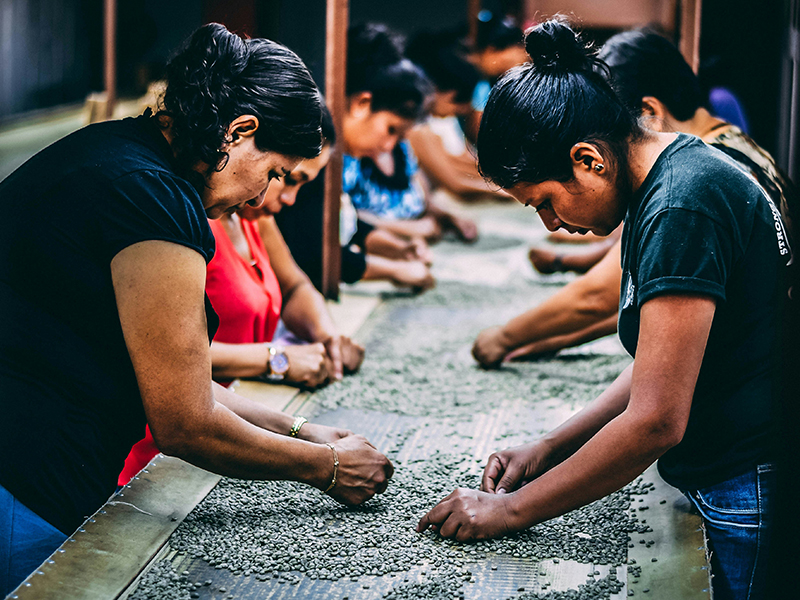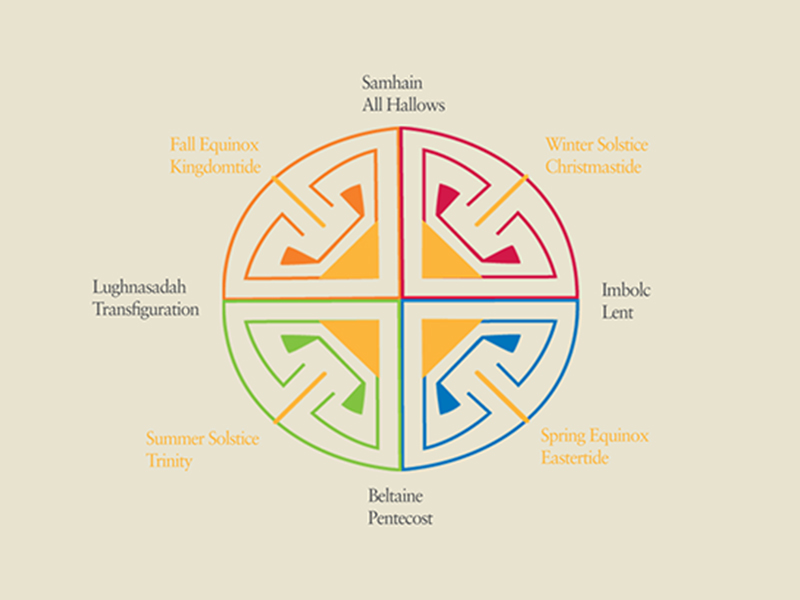
Photo by Max Panamá on Unsplash
In past blogs I’ve cycled the seasons by the dates of the northern hemisphere; this year it falls on June 20th. But this fact is only true for half the world. Summer Solstice in the southern hemisphere falls on Dec 21. Which date is true depends on where we are. If I didn’t know about the other hemisphere, I might say a person claiming it was Winter Solstice in June was lying.
How can we discern if we are being told a truth or a lie? As a child I made up stories and play-acted them by myself and with neighborhood pals (something I still do). My parents worked very hard to teach me to know when the story I was telling was a lie … that it had no basis in what was happening in the “real world,” and, in many cases, in fact had not happened. I do my very best decades later to never lie.
Helpful to my children was Mr. Roger’s Neighborhood, where a train took us into the Land of Make Believe.
In the oldest stories there is a lesson to be learned from sorting seeds. Often it is the first task given by a king or witch or other teacher to the journey maker. The command is “sort the living seeds from the dead.” The witch adds “or die” in the Russian tale Vasalisa the Beautiful. This story is explored in my play Waiting for Baba Yaga (Waiting being a later task).
The seed sorter learns Discernment by examining details. The fruit of discernment is Achieving Perspective. Sometimes the journey maker’s task is to climb, and keep climbing until a new vista, or perspective of a situation, is achieved.
Lies are a form of dead seeds; they can be planted but no sustaining food grows from them.
Sorting Seeds
How do we discern the truth? How do we sort seeds of truth from lies? As a child both my husband and I played under very large tables where our mothers, grandmothers and their neighbors were quilting. We grew up hundreds of miles apart and didn’t meet until college, but our memories of what we learned playing under those tables shaped both our lives.
These “quilting bees” were Gossips. Gossip is not just a feminine practice; my father would say after going fishing or hunting with his men friends that “We spent a lot of time shooting the bull.” The word Gossip originally referred to those adults gathered around a child (think god-parents) who would discuss how the child was growing and who could help by doing what.
We often use Gossip to demean the process of gathering together to learn the truth.
A group can be:
- Malicious, living up to that current definition of Gossip.
- Contentious, with some participants purposing stirring up animosities
- An Echo-Chamber, parroting back and forth the same information to each other.
- Good listeners, careful to understand each point of view, inviting each other to explore together.
- Skilled at a listening/discovery process, perhaps rooted in indigenous wisdom. Using a “talking stick” passed from person to person is one method.
- Like a Quaker Meeting, where into the group’s silence each speaker says the truth as they experience it, and is listened to, each individual’s truth resting in the silence until another speaks. It is a seasoned, respectful, slow but sure process of sorting seeds. Every wrinkle is ironed away before the final Yes or No.
For a number of years I attended a week-long conference in Santa Fe called “Seed.” A difficult, divisive topic was chosen, around 20 experts invited to sit at a round table in randomly assigned chairs, and speak only once. The rest of us were silent. There was no cross-person discussion. Facilitated by Leroy Little Bear, each speaker was to
- comment on any of the information shared before they spoke,
- and then state their own view.
I could feel truth being built as each individual added new information.
The same truth telling process and phenomenon occurred for me in a recent week-long conference on AI. I attended it because I was ignorant and afraid of how AI was being and could be used. The moderator invited multiple experts in AI for authors: writers, editors, publishers, early AI inventors, copyright experts, you name it. Listening to five days of around 30-minute videos from every possible point of view built a valuable foundation of knowledge for me.
Building Consensus
The criterion for being a member of the quilting bee was being an excellent quilter. It was not which end of town, hill or river, married or not, extroverted or introverted, children or not, religion, politics… The members were not a built-in Echo Chamber of sameness.
In our under-the-quilting-table experiences, we would hear one woman ask “Did you hear about….” Another would say “Yes” and add information or “No” and ask a question. A dozen points of view would be offered—what each member knew—exploring to discover the kernels of truth in the various stories. Sometimes it was based on realizing this and that fact was observed by several people; sometimes one person’s point of view shifted the group. This is the process of a group sorting seeds.
Sometimes if a truth was agreed upon, once home the women would mention a new bridge over the creek was a great idea. Support for a woman to go back to her family in the East after being nearly beaten to death by her husband was privately organized by a single woman after the meeting. Consensus led to action. No consensus led to watching, listening, and waiting.

Seed Sorting and the Margins of Truth
My recent blog titled Living at the Margins Requires Context Awareness gives three definitions of Margin. One is edge, boundary, the second an amount, and the third surplus or elbowroom. What we need to be skilled at Context Awareness is a trained ability to observe, and to know how to connect with others as they are in the present moment.
If we interview three people who observed the same incident we will hear three different versions, limited or expanded by the perspective of the viewer. As a consultant if in individual interviews I hear the same story over and over I know the interviewees have constructed a story to tell the intervenor. The group needs to prevent the “truth” being known to any outside their constructed reality. Their need to protect either a person or the group signals the presence of a dangerous truth that if revealed will have serious consequences.
My father faithfully watched the 10:00 news on different channels than the 6:00 news each night. Riding the bus, he read the conservative Post editorials in the evening, and the News in the morning with its focus on people’s stories. Trained as an observer of work processes for the Air Force Reserves, he would build his perspective on an issue fact by fact. Then he would test his perspective with his work companions during morning coffee.
I have three friends who construct multidimensional views of the news by listening to/reading/viewing a very conservative report, a very liberal one, and a trusted resource. Note I said “report” not “newspaper.” Part of seed sorting now for me is to know who owns my resource.
Screens and Perspectives
My father was viewing different screens in order to create his perspective. The word screen is both a noun and verb:
As a noun it describes an upright partition used to divide in order to give shelter or conceal. It also means the flat panel or area on an electronic device. Now/soon available screens allow projected, multi-dimensional viewing installed on glasses or in us.
As a verb the word screen means to conceal, protect, or shelter. We create screens to safeguard our points of view and our definitions of the truth. Some screens are purposefully created to camouflage or disguise a situation, as in my example of all interviewees transmitting the same story.
The path to any possible “truth” involves first knowing what is being protected or partitioned behind the screen.
Perspective
The word perspective means both
- the art of drawing solid objects on a two-dimensional surface so as to give the right impression of their height, width, depth, and position in relation to each other when viewed from a particular point.
- a particular attitude toward or way of regarding something; a point of view.
We often create our perspective on any and everything from a broad or narrow feed of other people’s perspectives. Perhaps too often we state our opinion by regurgitating what we’ve been told by others. We select the story we will believe because we can remain comfortable within our screens, rather than realize the screen is blocking truth from our sight and our perspective is based on false or incomplete information.
Dana O’Driscoll is a homesteader and land healer, working in many different ways to heal the planet. In her June 2 2024 blog, “Living with Climate Change” she describes multiple pairs of glasses she puts on to view our current situation. She has multiple glasses (screens) for sorting seeds of multiple truths: Scientific observer, gratitude, joy, grief, anger, enchantment. Regardless of which screen she is using at the moment, Dana’s final perspective is hopeful.
(My glasses) of hope and vision: In my very spirit, I know that humans will find a better path and that the earth will heal. I am heartened to hear from so many people who are trying to do good and make change in the world. I know, know, know in my spirit and soul that a new paradigm is coming and it will replace all of this destruction with something better.
—Dana O’Driscoll
One Perspective on Personal Imagination and Truth
Tom Devine is a friend of mine of long standing, and I respect his decades of work on removing inner and outer screens and shifting perspectives. I feel privileged to share his perspective on how we literally make up “realities.”
One thing that’s come up for me again and again in my Lenten writing exercise is how often I find myself imagining what others are thinking or feeling. And in every case, I realized, I’m wrong, necessarily—because I’m “projecting.”
As a matter of plain fact, I don’t know what you are thinking or feeling. And somehow that worries me. How can I empathize, I wonder, or even relate to you at all, if I can’t predict your feelings, thoughts, reactions?
But writing those questions showed me an unpleasant truth about myself: for if I need to be able to predict your reaction before saying something, I must be trying to control you. What I say or do in that scenario is a calculated act—calculated to get the response I want. It’s manipulation, not relation.
The answer to my questions should be obvious: Don’t assume or predict: ask, and listen. Rely on the other to reveal their own thoughts and feelings.
In the situation of not-assuming (admitting to myself that I actually don’t know what you think or feel, which is always true), I have to act more cautiously and respectfully—because I don’t know how you’ll react. And maybe that’s the origin of courtesy.
I guess that’s the main problem with our politics: people on both sides of the red-blue divide imagine they know what the “other side” thinks and feels, and on both sides, those imaginings are ugly caricatures.
What we imagine about anyone is so much less interesting and complex than their actual thoughts and feelings. Maybe the only hope for healing our democracy is a little humility, a lot of dialogue, and a lot more courtesy.
—Tom Devine
By taking down as many screens as we can find in ourselves, and forming our perspective from information offered directly from the source, we may have some chance at The Truth. Realizing that we can choose a negative or positive screen—a pair of glasses—allows us to shape our experience of it. As our choice of perspective changes our orientation, it can deplete or refill our core energy.
Friendly Advice
As we listen to others, we may discover that no one has the whole truth; that in itself is part of the truth. Truth is almost always complex, a point in time, and a mixture of the known, the unknown, and the unknowable. The time needs to be taken to sort the seeds. The more confusing the choices, the more time required.
In Four Ways to Forgiveness Ursula K. LeGuin’s way number three is titled A Man of the People. Very near the conclusion the main character Havzhiva, says: “All knowledge is local, all truth is partial. …. No truth can make another truth untrue. All knowledge is a part of the whole knowledge. …. Once you have seen the larger pattern, you cannot go back to seeing the part as the whole.”
I learned specific methods for sorting seeds during the ten years we spent in an American Friends (Quaker) Meeting House, both on Sundays and at monthly business meetings. For a taste of those methods, here are two Advices and two Queries from IMYM Faith & Practice, Monthly Meeting, p. 119-121.
Advices:
* Those who speak in meetings for business are advised to feel free to express their views but to refrain from pressing them unduly, avoiding contentiousness, obstinacy, and the urge to control. Seek the leadings of the Light and admit the possibility of error. A “third way” may be needed in order for Truth to emerge and a sense of the meeting to be reached.
* A deep and seeking silence can help reconcile seemingly opposing points of view. Be willing to wait upon God as long as may be necessary. By holding division and disruption in the Light, meetings may shift toward stronger and more creative solutions.
Queries:
* Are we prepared to let go of our individual desires and let the Holy Spirit lead us to unity?
* Do we accept with grace a decision of the meeting with which we are not entirely in agreement?
* Are we aware that we speak through inaction as well as action?
Our Seed Sorting Tasks
The first task is Context Awareness: Observation. Can we observe the information coming to us with as open a mind and heart as possible? And can we observe as we listen and read with discernment:
- Was the commenter present or is this passed along information from another, unknown source?
- What screens created the perspective the commenter is bringing to the observation?
- What personal biases are we bringing to our seed sorting?
And as I communicate with others:
- Was I there? If not, can I name my trustworthy source of information?
- What screens created my perspective that I’m sharing? Can I name them and include them in my commentary?
- Is my personal bias to tell only the whole truth (all sides of it, all known to be accurate facts) and nothing but the truth as I know it?
- If not, can I keep my comment to myself rather than deepen or enlarge the potential lie?
I am looking at these seeds, Spirit.
Let me set aside my own dead perspectives,
My need to confirm I am right.
Let my hands plant only what will give life.
Comments are appreciated.





I think the best way to learn about what is true and how people develop their thoughts and opinions is to lead with curiosity rather than judgment. Asking people how they feel, how they know what they know, what their lives are like and to listen deeply, helps make it possible to have a conversation.
There’s a goal for us all: To listen deeply … listening with heart rather than mind, minus our value judgment. I am very curious, as I think you are Nancy. But I have to be careful because my curiosity sometimes goes one question too far and I cross a boundary. A greatly annoyed man on a plane once asked me if I were a psychiatrist because I’d gotten deeper in five questions than his counselor in five sessions. I apologized. Once a conversation gets started, now I aim to listen with my heart, waiting through the silences, and allow the person to lead the conversation.
“Truth is almost always complex, a point in time, and a mixture of the known, the unknown, and the unknowable.” I loved this sentence because I think so much is unknowable as regards Truth. I agree that leading with an open heart and not being reactive regarding one’s known screens is helpful. In this time of discord and confusion in the other world, I am working on developing my inner listening. And then kindness. One can not stray too far utilizing kindness in the moment.
Thank you for your practice of “inner listening” and for loving a sentence I loved also. \I’ve been practicing “kindness”, both with myself and others.
I’m extending my practice to kindness towards those faced with “accepting a different truth” – say of a person or of the weather – and the difficulty of living beside or leaving behind most every person, screen, and organization in your life.